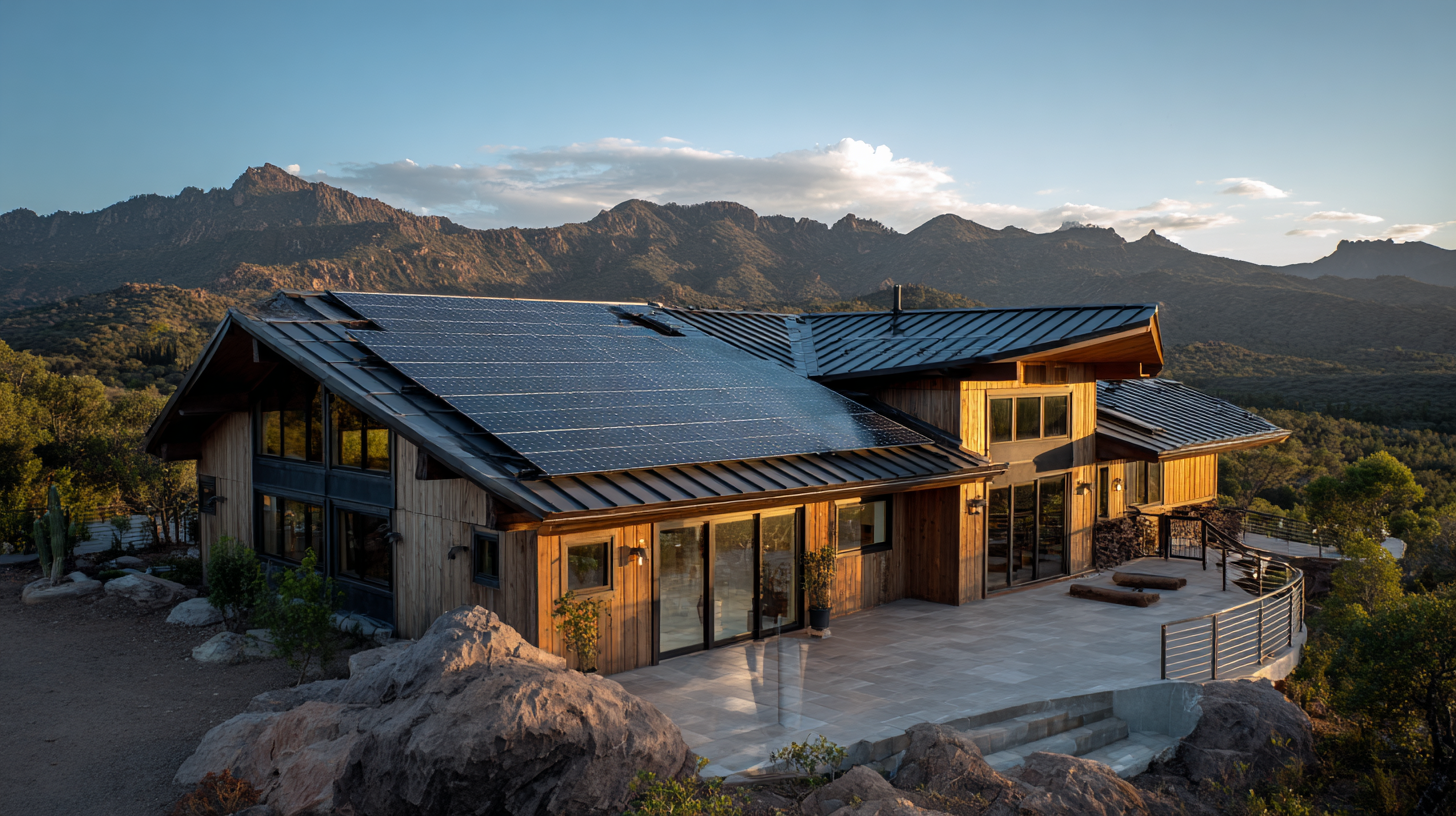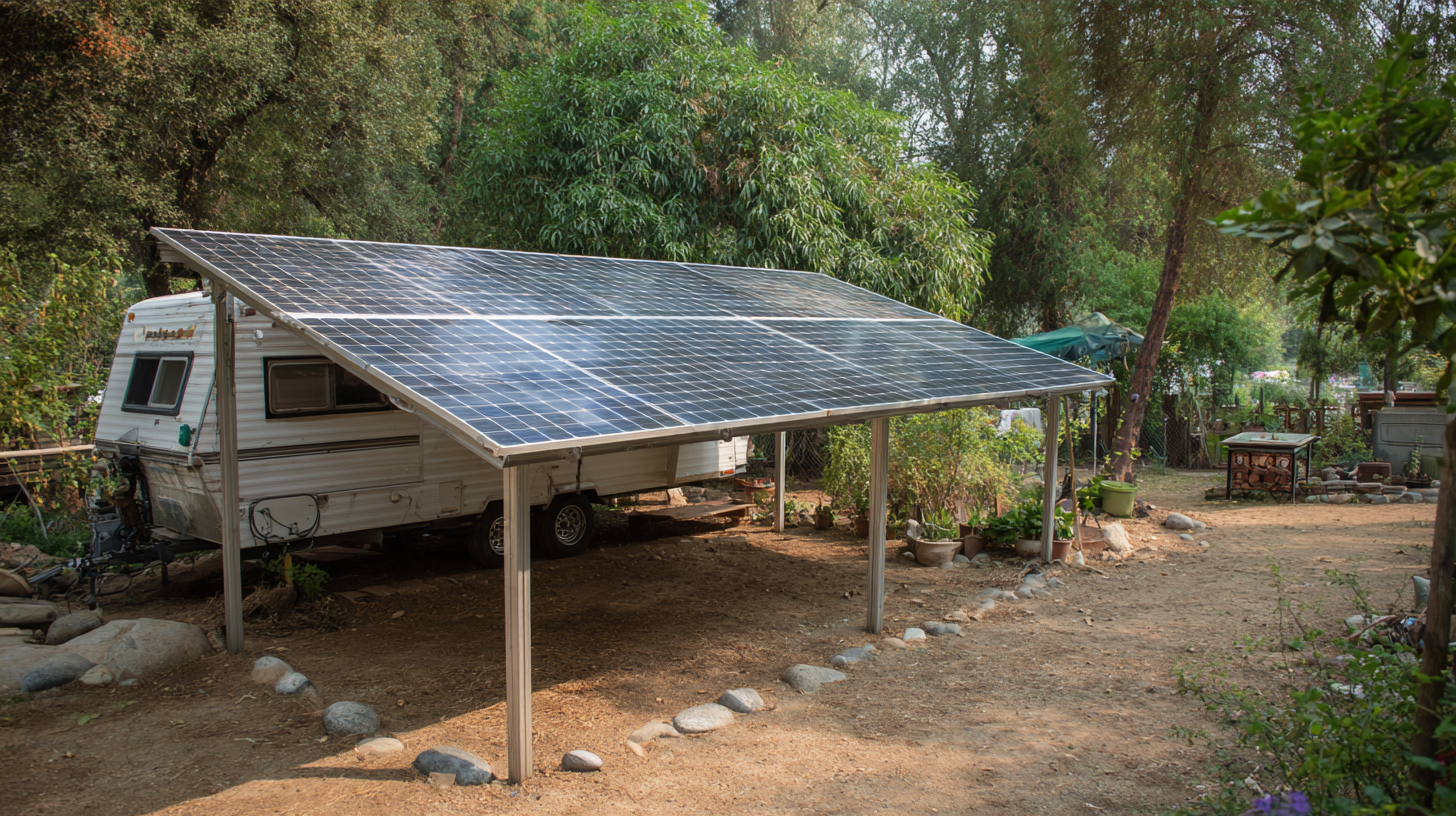What You Should Know About Best Off Grid Solar Power Solutions
Off Grid Solar Power solutions are becoming increasingly vital in the context of global energy demand and environmental sustainability. According to a report by the International Renewable Energy Agency (IRENA), the off-grid solar market has experienced unprecedented growth, with an estimated installation of over 4.6 gigawatts of capacity in 2020 alone, marking a 30% increase compared to the previous year. This surge is driven by a combination of decreasing solar panel costs and an urgent need for energy access in remote areas, particularly in developing nations.

Furthermore, the Global Solar Council predicts that by 2030, off-grid solar power could provide electricity to over 500 million people worldwide, highlighting its potential as a transformative energy solution.
In this blog, we will explore the best off-grid solar power solutions available today, with a particular focus on the leading innovations coming from China's manufacturing prowess, which is setting new benchmarks in energy efficiency and technology.
Understanding Off-Grid Solar Power: Key Concepts and Benefits
Off-grid solar power solutions have gained increasing attention as more people seek energy independence and sustainability. Understanding the core concepts behind off-grid systems is essential for anyone considering this alternative energy source. At its simplest, an off-grid solar system comprises solar panels that capture sunlight and convert it into electricity, a charge controller to regulate power flow, batteries for energy storage, and an inverter to transform DC electricity into usable AC power. This setup allows homeowners to generate and utilize their electricity without relying on traditional utility grids, making it a viable option in rural areas or during emergencies.

The benefits of off-grid solar power are substantial. Notably, it promotes energy self-sufficiency, allowing users to harness renewable energy while reducing dependence on fossil fuels. This not only leads to cost savings on energy bills in the long run but also supports environmental sustainability by decreasing carbon footprints. Additionally, off-grid systems can be tailored to specific energy needs, offering flexibility and control over energy consumption. By investing in off-grid solar power, individuals not only secure their energy supply but also contribute positively to a greener future.
Essential Industry Standards for Off-Grid Solar Solutions
When considering the best off-grid solar power solutions, it's crucial to understand the essential industry standards that govern these systems. The National Renewable Energy Laboratory (NREL) emphasizes that adherence to safety and performance standards, such as the Underwriters Laboratories (UL) 1703 for photovoltaic panels and UL 1741 for inverters, is vital in ensuring that off-grid solutions operate efficiently and safely. These standards help mitigate risks related to equipment failure and fire hazards, which are particularly important in remote locations where maintenance is challenging.
Furthermore, the International Electrotechnical Commission (IEC) outlines standards like IEC 61215 for photovoltaic module design qualification and IEC 61730 for safety. According to a recent report from Research and Markets, the global off-grid solar market is expected to grow at a compound annual growth rate (CAGR) of 24.6% from 2021 to 2026. This robust growth not only highlights the increasing demand for reliable off-grid systems but also underscores the importance of industry standards in maintaining quality and consumer confidence. By adhering to these regulations, manufacturers can ensure their products deliver reliable performance, optimizing energy production and sustainability in off-grid applications.
What You Should Know About Best Off Grid Solar Power Solutions - Essential Industry Standards for Off-Grid Solar Solutions
| Aspect | Description | Industry Standard |
|---|---|---|
| Solar Panel Efficiency | The percentage of sunlight converted into usable electricity. | > 15% for standard panels |
| Battery Storage Capacity | The amount of energy stored for use during non-sunny periods. | Rated in kWh, suitable for needs. |
| Inverter Rating | The efficiency of converting DC to AC power. | > 95% efficiency |
| Solar Charge Controller Type | Device regulating voltage/current going to the battery. | PWM or MPPT recommended |
| System Size | Total power output of the solar array. | Based on estimated daily energy consumption |
| Installation Quality | Proper installation impacts performance and safety. | Adheres to local regulations and codes |
How to Choose the Right Off-Grid Solar System for Your Needs
Choosing the right off-grid solar system requires a clear understanding of your specific energy needs and environmental conditions. Start by calculating your daily energy consumption. This includes all lights, appliances, and electronics you plan to use. A comprehensive inventory will help determine the size of the solar system you need.
Tips: Consider utilizing an energy-efficient approach by selecting LED lighting and Energy Star-rated appliances, which can significantly reduce your overall power requirements. Additionally, think about the positioning of your solar panels; optimal placement facing south can maximize exposure to sunlight, enhancing energy production.
When selecting components, focus on quality and compatibility. A simple system may consist of solar panels, a charge controller, batteries, and an inverter. Prioritize brands that offer warranties and reliable customer service.
Tips: Research different battery types—such as lithium-ion or lead-acid—to find one that aligns with your usage and budget. Always factor in future energy needs, like potential expansion or additional appliances, to ensure your solar system remains effective over time.
Installation Tips for Efficient Off-Grid Solar Power Systems
When considering the installation of an off-grid solar power system, efficiency is key to maximizing energy independence. One of the first tips is to assess your energy needs carefully. Calculate your average energy consumption to determine the appropriate system size. This will help you avoid overspending on unnecessary capacity while ensuring you have enough power for your lifestyle.
Another important aspect is the placement of solar panels. Positioning them to capture maximum sunlight throughout the day can significantly enhance energy output. Consider factors such as shading from trees or buildings, the angle of installation, and geographical location. Furthermore, investing in a quality battery storage system can provide a buffer for energy usage during cloudy days or nighttime, offering a seamless transition between solar energy generation and consumption.
Lastly, keeping abreast of incentives available for renewable energy systems can be beneficial. Many regions offer financial assistance or tax breaks for those installing solar systems, which can drastically reduce upfront costs. By leveraging these incentives, you can accelerate your transition to off-grid solar power while ensuring a sustainable and economical energy solution.
Off-Grid Solar Power System Efficiency Metrics
Maintenance Best Practices to Ensure Longevity of Solar Solutions
When considering off-grid solar power solutions, understanding the maintenance best practices is crucial for ensuring the longevity of your system. Regular maintenance not only maximizes the efficiency of solar panels but also extends their lifespan significantly. Routine cleaning to remove dust and debris, as well as regular inspections for any wear or damage, can prevent inefficiencies that might otherwise lead to costly replacements or repairs. With the metal roofing market projected to reach over $32 billion by 2031, the integration of solar solutions with durable roofing materials presents a compelling opportunity. High-quality roofing not only enhances the structural integrity but also complements the energy generation potential of solar installations.

Moreover, recent innovations in energy storage, such as the introduction of long-duration storage systems, highlight the importance of maintaining a robust energy supply for off-grid solar setups. Implementing best practices for system maintenance, including monitoring battery health and ensuring proper ventilation, can significantly enhance the performance of these storage solutions. As the global market for renewable energy continues to expand, with an expected 3.5% CAGR through 2031, investing in proper maintenance and sustainable materials for solar energy systems will be vital in keeping pace with growing energy demands.

